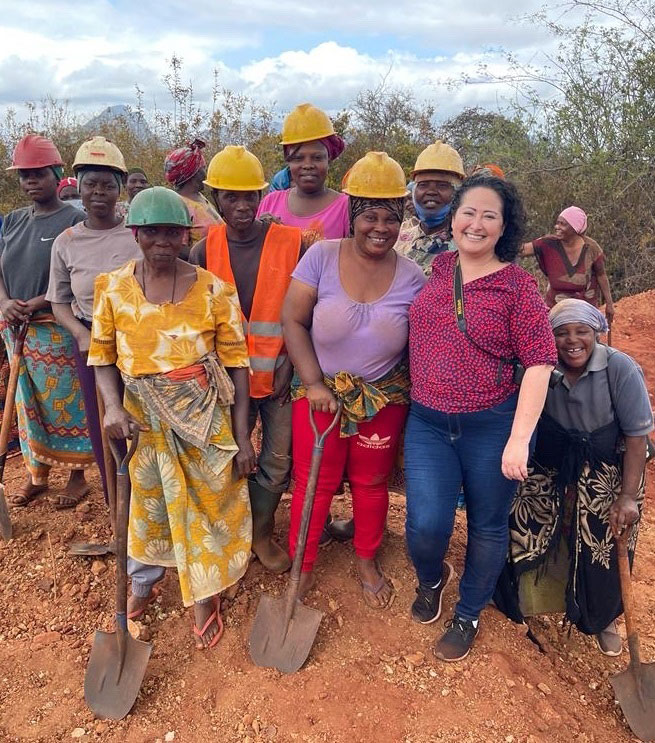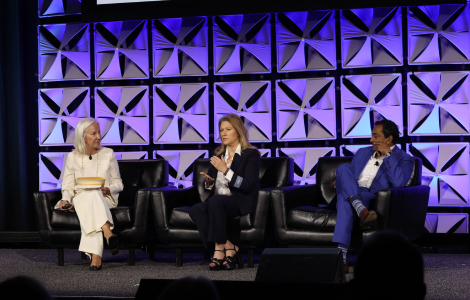Interview with Cristina Villegas, Director Sustainable Markets, Pact
In many countries, women comprise 40 – 50% of the artisanal and small-scale mining (ASM) workforce, how can ASM create economic empowerment opportunities for women?
Most brands and consumers have no idea that about 90% of all mine labor worldwide is done by artisanal and small-scale miners, who are people using shovels, picks, and human strength to pull minerals from the earth. There are about 45 million ASM at work worldwide. Usually about one-third of a given country’s ASM workers are women, and sometimes it’s up to half. In terms of potential SDG impacts, working with ASM and working with women miners in particular can be a very powerful story of positive change. It’s common to find that women miners are the head of their household and that one miner’s income is supporting 5-7 children.
What are some of the challenges and how can they be tackled?
The challenges vary dramatically based on where the miner is located. With women miners, we tend to see them overlooked in training opportunities or in new government programs because people wrongly assume that women do not mine. So it can be a vicious cycle, where women already have the fewest resources, are overlooked in training opportunities, and are completely invisible to the jewelry industry. I’ve realized that if you do not start with women miners, they can become an afterthought. So the last few collaborations that I have led, I’ve started with women miners — with intention—so that the program ultimately reaches 50-50 gender parity. It takes more effort, but it’s been so worth it. Whole communities are changing before my eyes.
Can you share an example of a project that has delivered meaningful impact for women on the ground?
Over the past few years, Pact has worked with GIA, The Tiffany & Co. Foundation, The Brilliant Earth Foundation, The World Bank, and small, reform-minded studio jewelers to bring new opportunities to the hidden female workforce behind gem mining. These are programs such as gemology education and market skills trainings to help women miners understand their materials and command better prices using that new, expertly-taught knowledge. We also bring financial literacy and community-banking programs to gem mining communities to catalyze small businesses and income diversification. In Tanzania, we’ve been seeing women jointly start side-businesses focused on beekeeping, sisal farming, and chicken keeping. These activities help buffer communities against economic shocks and they stabilize household economics to help whole families. I remember that in one community, we learned that gem miners were skipping meals because they were so destitute. Our programs quickly turned that around. Those miners are now thriving.
How can the private sector support the empowerment of ASM communities?
ASM communities are filled with partnership opportunities for meaningful, lasting change. However, it is important to choose the right partner for this work. Pact, the Alliance for Responsible Mining, and Gem Legacy are all good choices. There are three ways that companies can responsibly ‘plug in’ to this work.
- Buy the Good Stuff! Start intentionally sourcing from responsible ASM sources. Think about special collections that you can make. Start small and scale it over time when these sources prove that they are consistent suppliers to you. In gold, your current choices are Fairmined, Fairtrade, Swiss Better Gold, and Just Gold. Pact is working on additional responsible gold sources that we hope will be available soon. In colored gemstones, there is the Moyo Gems program (which I run), and Virtu Gems. Both source high-end gemstones directly from ASM miners. In Moyo Gems, I’m particularly proud that 60% of the miners that we work with in Kenya and Tanzania are women miners. Imagine all of the storytelling opportunities! In diamonds, your current choices are GemFair and RootDiamonds, which are both sourcing diamonds from Sierra Leonean miners.
- Channel your philanthropic investments back into mining communities. Because of traceability breakthroughs that I’ve been a part of, you can now align your company’s corporate social responsibility funds to your source communities. For example, Moyo Gems offers this. There are ongoing greening supply chain initiatives, economic empowerment projects, and market initiatives that companies of any size can plug into. Just contact me!
- Engage, don’t disengage. One trend that I’m increasingly concerned about is companies intentionally disengaging from ASM sources on ‘sustainability’ grounds. This is particularly frustrating because artisanal miners – such as those who I work with in East Africa — are often the ones most affected by climate change. The biggest group of miners that I see in Tanzania are former farmers who have turned to mining because the changing climate has made the rains less frequent. In this case, disengagement from this source means taking away the only competitive livelihood that is now available to them. Careful engagement via trusted partners – where miners are assisted in greening supply chains– is the best response for meaningful, just sustainability practice. In the future, I foresee some artisanal sites being not only net zero, but climate restorative. Wouldn’t that be an interesting local and global legacy?











